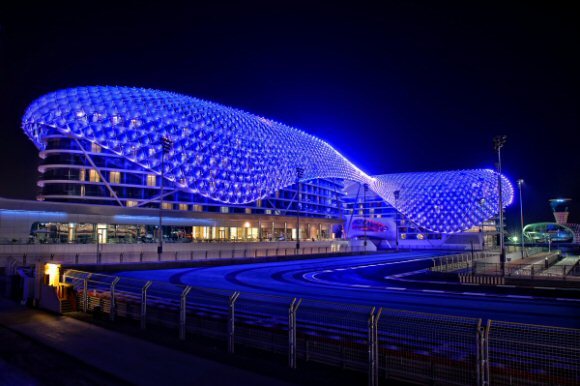Traxon contends control technologies are getting simpler 31 Jul 2012 The latest in DMX512 control technologies is actually simplifying the path to user-controlled content, according to Javid Butler of Traxon Technologies who presented at The LED Show. For many lighting professionals, the dimming and control aspect of the industry can represent a seemingly complex problem. There are an increasing number of control options to choose from with LED lighting and compatibility is not always assured. And, as Javid Butler, director of technical operations at Traxon Technologies USA described, it is important to have a simple and easily comprehensible user interface, "otherwise, often people try to use something, it doesn't work, and they assume it's broken," he stated. Butler was one of four speakers at the pre-conference workshop that kicked off The LED Show in Las Vegas this week.

The YAS Hotel in Abu Dhabi uses Remote Device Management to feedback the temperature of LED fixtures.
The good news is that the industry has developed standards, such as the DMX512-A protocol, which simplify control systems and the hardware needed to accomplish lighting goals without having to understand all the technology behind control systems. For instance, digital control protocols such as DMX systems, which are commonly used in media fa?ade lighting on large buildings, are controlled today through PC-based software rather than complex control panels, which really are designed more for programming purposes.
In addition, one aspect of DMX512-A allows Remote Device Management (RDM), which enables, for instance, the setting of a DMX address remotely. That means that if you have a room full of pre-programmed lighting fixtures and one fixture is not behaving properly (flickering or showing the wrong light), as a user you can identify that fixture in your control layout without having to search for and source the wiring in the ceiling.
Butler highlighted other functionality that this new standard has brought to users. For instance, remote sensing of temperature inside a luminaire can be performed, a feature that came in particularly handy when Traxon was involved in the lighting installation in Abu Dhabi at the YAS Hotel. "In the Middle East, temperature monitoring of the outside LED lights was particularly important, and we ensured that the each light remained within an acceptable temperature range using RDM," Butler said. Touted as the world's largest LED installation in 2010, the RDM system allows bidirectional communication between the LED lights in the fa?ade and the control server.
Another technology employed in such large installations according to Butler is the transfer of DMX protocol data from the server to Ethernet-based cable that is then sent out to multiple client-based servers where it is again converted to DMX data. "The reason for doing this is because Ethernet hardware speeds the transfer of the data across these distances," Butler explained.
Such hardware changes are allowing users to customize media fa?ades and quickly change between not only pre-programmed sequences but also interactive video, third-party-supplied streaming video or even live video using a photographer. As Butler commented, such developments are allowing fa?ades to be more dynamic than ever.





